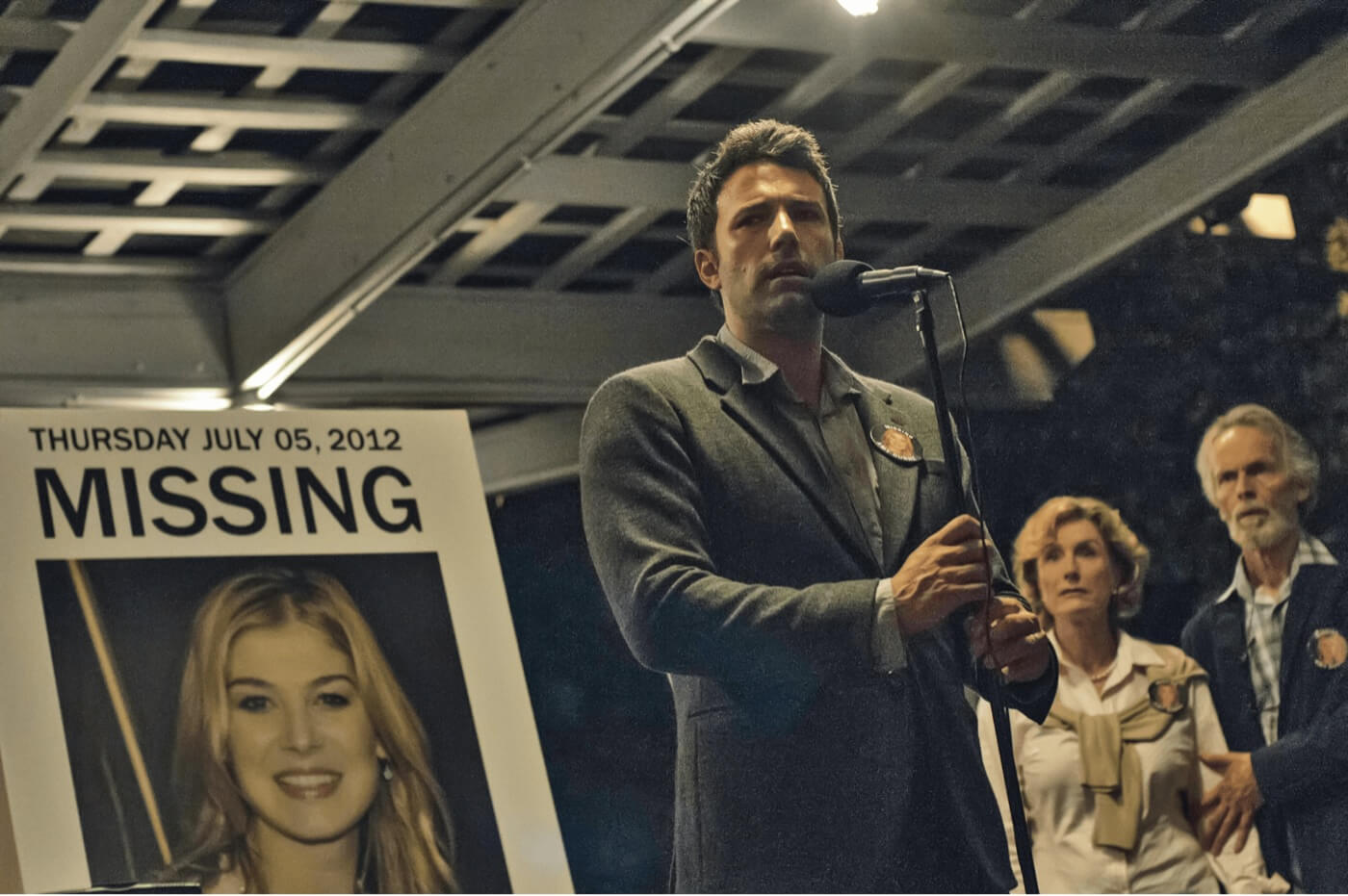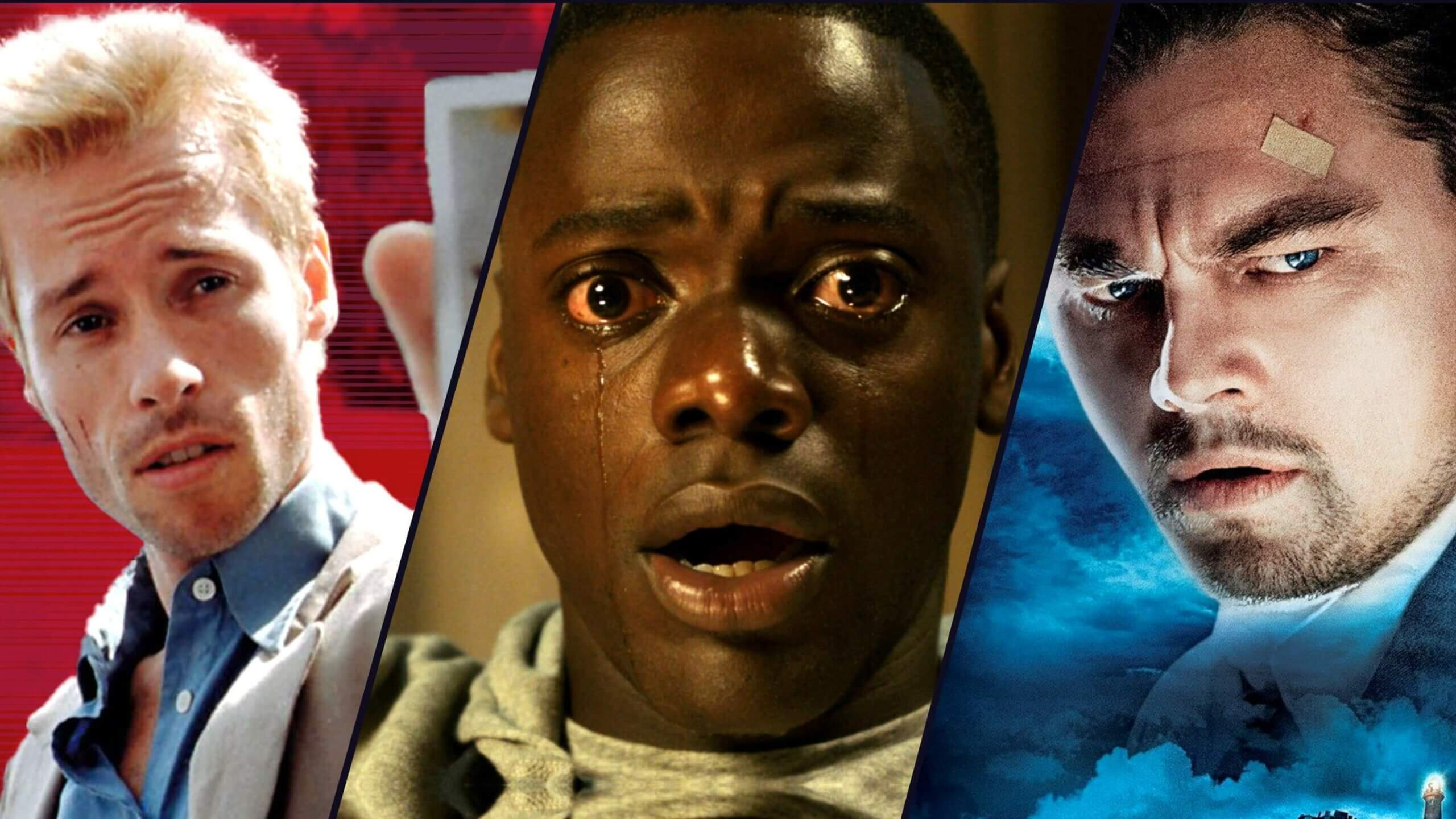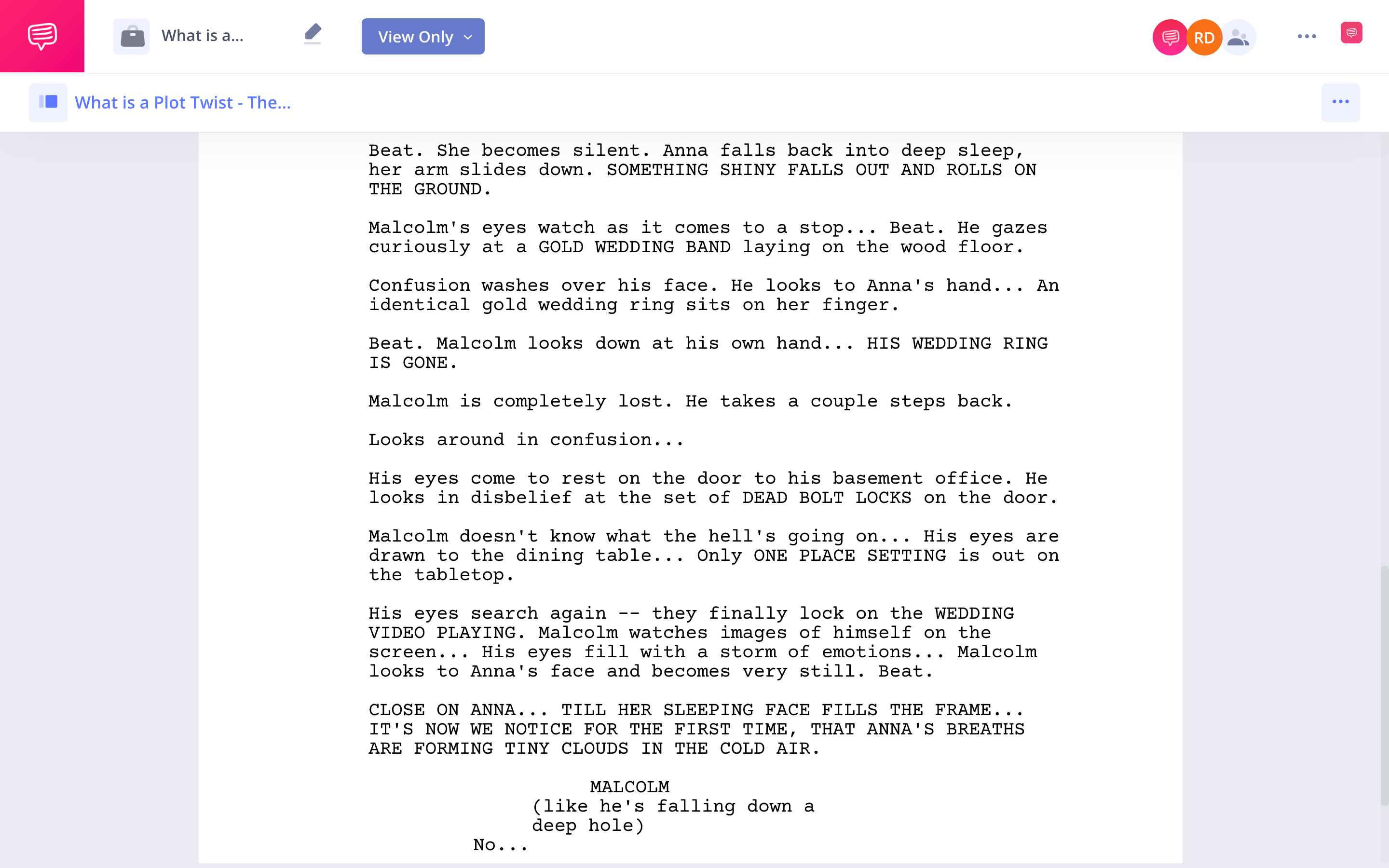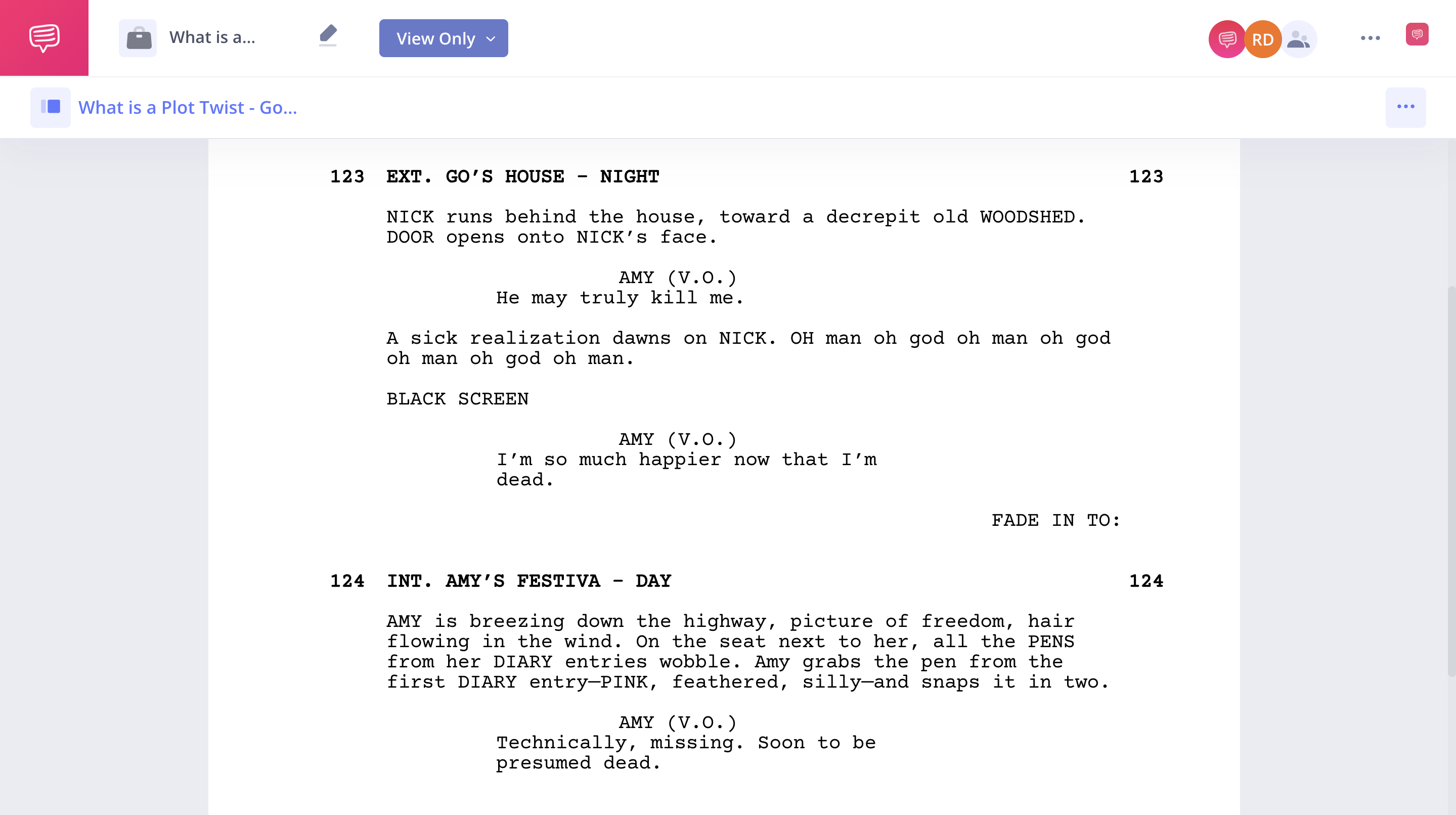What is a plot twist? It’s a term we’ve all heard before – but we rarely ever hear it defined. So today, we’re going to define plot twists by looking at some good twist examples in literature and film. By the end, you’ll know how to write a plot twist like the greats, including Christopher Nolan and M. Night Shyamalan.
Plot Twist Meaning
What does plot twist mean?
Every story needs plot. Every plot needs sequences. Every sequence needs story beats. It may sound complicated but it’s remarkably simple. “Plot” is the basis for the entire story, whether it be a book, screenplay, or video game.
Think of “plot” as a pyramid, built block by block, or sequence by sequence, towards an apex.
Plot twists serve to remove blocks from the pyramid’s structure, halting progression and changing direction. Why do writers do this? Because their stories rely on contrived structures. Why do their stories rely on contrived structures? Because they’re easy to follow.
I want to be clear though: contrived structures like Save the Cat! and The Hero’s Journey are not inherently bad! They simply offer a basis for a story – plot twists are one way writers can deviate from the basis.
For twists to be successful, they need to be integral to the plot. In other words, they need to be foreshadowed beforehand and resolved afterwards.
Now that we’ve reviewed the plot twist meaning, let’s move ahead with a plot twist definition.
PLOT TWIST DEFINITION
What is a plot twist?
A plot twist is a deviation from an expected story beat. Plot twists can take place at any time in a story, but they’re most commonly associated with endings (i.e.,” twist endings”). Writers frequently use plot twists to add nuance, shock, and surprise to formulaic narratives.
Types of Plot Twists
- Classic Twist
- Mid Twist
- Double Twist
What is a Plot Twist that Was Right in Front of Us?
Classic twists are magic tricks
I consider a classic twist a twist with an answer that’s been right in front of us the whole time. Classic twists rely on careful planning and clear execution. Let’s take a look at a couple examples.

Classic Plot Twist Definition • Christopher Nolan’s The Prestige
Christopher Nolan loves twists. How do I know? Because they’re integral to just about every one of his movies – but his 2006 film The Prestige contains one of the most noteworthy twists of all-time. Spoilers ahead!
The Prestige follows the story of two magicians: Borden (Christian Bale) and Angier (Hugh Jackman). Borden performs a successful trick by appearing in two places at the same time, angering Angier.
Angier becomes consumed with learning how Borden performed the “Transported Man” trick. Want to know how he did it? Check out this clips.
Plot Twist Examples • The Prestige Twist
In the end, we learn that there were two Bordens. It’s actually a simple twist that was foreshadowed early on.
The twist in The Sixth Sense is so classic that just about everybody knows it. If the ending of The Sixth Sense has somehow never been spoiled for you: stop reading and watch it.
Iconic Film Twists • M. Night Shyamalan's The Sixth Sense
The film follows the story of psychologist Malcolm Crowe (Bruce Willis) who struggles to move past being shot by a former patient. Shortly after being shot, Malcolm begins treating Cole, a troubled child who says he sees dead people. Seems pretty standard – well as standard as poltergeist encounters can be.
The twist comes near the end when we realize something essential about Malcolm’s character. Check out a video on the ending from The Take below.
What is a Plot Twist? • The Sixth Sense Ending Explained by The Take
The secret about Malcolm’s character? He’s dead. WE SAW HIM GET SHOT REMEMBER?! M. Night Shyamalan tricks us into thinking he’s not dead by treating the shot as the plot’s inciting incident. We’re led to believe that Malcolm survived, largely because we want to believe it.
Check out the reveal on the page, which we imported into StudioBinder’s screenwriting software:
What is a Plot Twist? • Sixth Sense script
What makes the reveal so well done is that it isn’t immediately obvious. You don’t have Anna say, “Dang, I sure wish you weren’t dead.” Instead, it’s done visually. Malcolm realizes slowly, and we realize with him.
What is a Plot Twist that Takes Place in the Middle?
Breaking down the art of the mid twist
A mid twist is a twist that takes place in the middle part of a story. Because of its place in the story’s structure, the mid twist must either change the direction and or the perspective of the plot.
Here are a couple examples of mid twists, spoilers beware.

Plot Twist Examples • Alfred Hitchcock’s Psycho
Psycho contains one of the most iconic examples of a mid twist in all of cinema. For the first act of the film, we’re led to believe Marion Crane (Janet Leigh) is the protagonist of the story. The plot is formulaic:
- Exposition: Marion’s lover won’t marry her because he doesn’t have the money.
- Inciting incident: Marion steals money to procure herself a better future.
- Plot point one: Marion meets a motel proprietor named Norman Bates while on the run.
Standard operating procedure. Up to this point, Psycho is as formulaic as stories come. But if you know anything about Alfred Hitchcock, you know “formulaic” isn’t exactly his M.O. So, after setting up the story in a formulaic way, Hitchcock and by extension screenwriter Joseph Stefano, burn the formula on fire and make a new one from its ashes.
Here’s the scene where the fire hit the fan.
What is a Plot Twist? • Psycho Plot Twist
It’s worth noting that Hitchock and Stefano didn’t have to institute a mid twist. The original book of the same name by Robert Bloch begins with Marion arriving at the motel. Moreso, it’s told from Norman’s perspective. So in a structural sense, the mid twist is a stylistic breakaway from the original story, which might have helped it carve out its own identity.

Plot Twist Definition • David Fincher’s Gone Girl
Gone Girl is the story to analyze if you’re serious about writing a mid twist. Gillian Flynn’s Gone Girl novel begins with the alternating perspectives of a husband (Nick) and wife (Amy). It’s clear from the characters’ tones that they’re giving somewhat of a one-sided perspective to the reader.
For the first part of the story, we’re led to believe that Nick could have been responsible for the disappearance of Amy. But the mid twist reveals that we’ve been lied to, from Nick and Amy. Nick lied about his faithfulness – Amy lied about pretty much everything. Oh, and she’s trying to frame Nick for her death.
The film version of Gone Girl makes Nick a bit more of a sympathetic protagonist. He still lies and cheats – but Flynn really plays up the cluelessness of his character in order to endear us to the mystery.
Here’s how the mid twist is delivered as seen in Gillian Flynn’s script:
What is a Plot Twist? • Gone Girl reveal
It’s a brilliant reveal. Nick starts to realize what’s happened just as Amy’s narration begins to turn. For a few pages, it’s not yet exactly clear what’s going on, building the tension for the ultimate turn.
Flynn enters Nick’s head just before we go to black – usually a screenwriting no-no but here done for great dramatic effect.
Cutting to black allows for the film to reset, and for Amy’s narration to really sink in: she’s in control.
Poorly executed mid twists make us feel like the mystery is solved, which removes the tension from the plot. Consequently, well executed mid twists make us feel like we’re in on the mystery, adding tension to the plot. If you’re interested in incorporating a mid twist in your story, consider reading up on dramatic irony and the stages of dramatic irony to master the art of tension.
What is a Plot Twist that’s Replaced by a Second Plot Twist?
How to write a plot twist, times two
A successful double twist makes us say “okay you got me” then later realize the first twist was set-up for the second twist – it’s really hard to execute. We’ve only seen a handful of great double twists in cinema history. Here are a couple.

Plot Twist Ideas • Gregory Hoblit’s Primal Fear
At its core, Primal Fear is a legal drama about protecting an innocent man. The story follows lawyer Martin Vail (Richard Gere) as he attempts to help altar boy Aaron Stampler (Edward Norton) beat a murder charge. The whole story is predicated on us empathizing with Stampler’s innocence – until it isn’t.
First twist: halfway through, we learn that Stampler is diagnosed with multiple personality disorder. As such, we suspect that Stampler did actually murder the Archbishop. Now here’s the second twist.
Unexpected Plot Twists • Primal Fear Ending
Second twist: in the end, we learn that Stampler’s innocent personality was a facade; it never really existed. He was a construct created by Stampler to get an insanity plea.
Fool me once, shame on you. Fool me twice, shame on me. Kudos to writer William Diehl for executing such a good twist.

How to Create a Twist in a Story • Bryan Singer’s The Usual Suspects
The Usual Suspects may seem like a standard police vs. criminals story at first glance, but it’s much more complex than that. The mystery identity of a notorious gangster named Keyser Soze is at the heart of The Usual Suspects – and his pursuit is central to the plot.
The first twist: In the end, we’re led to believe that Keaton (Gabriel Byrne) – who was integral to the plot – could have been Keyser Soze.
And that’s a big twist. Keaton being Keyser Soze recontextualizes the entire story and shifts its perspective.
But wait, something doesn’t add up. Keaton couldn’t be Keyser Soze, could he?
Unexpected Plot Twists • How to End a Story With a Twist
The second twist: we learn Verbal (Kevin Spacey) fabricated the entire story by picking out details from Agent Kujan’s (Chazz Palminteri) office. Verbal is the true Keyser Soze.
The ending of The Usual Suspects is widely considered one of the greatest endings of all-time. If you’re thinking about double plot twist ideas for your story, make sure everything adds up in the end like in The Usual Suspects.
UP NEXT
Best Plot Twist Movies of All Time
Now that we’ve defined what a plot twist is with some iconic examples, let’s move on to the best plot twist movies of all time. In our next article, we rank the best plot twist movies by three criteria: twist quality, twist originality, and film quality. Can you guess which classic film took the top honor?


